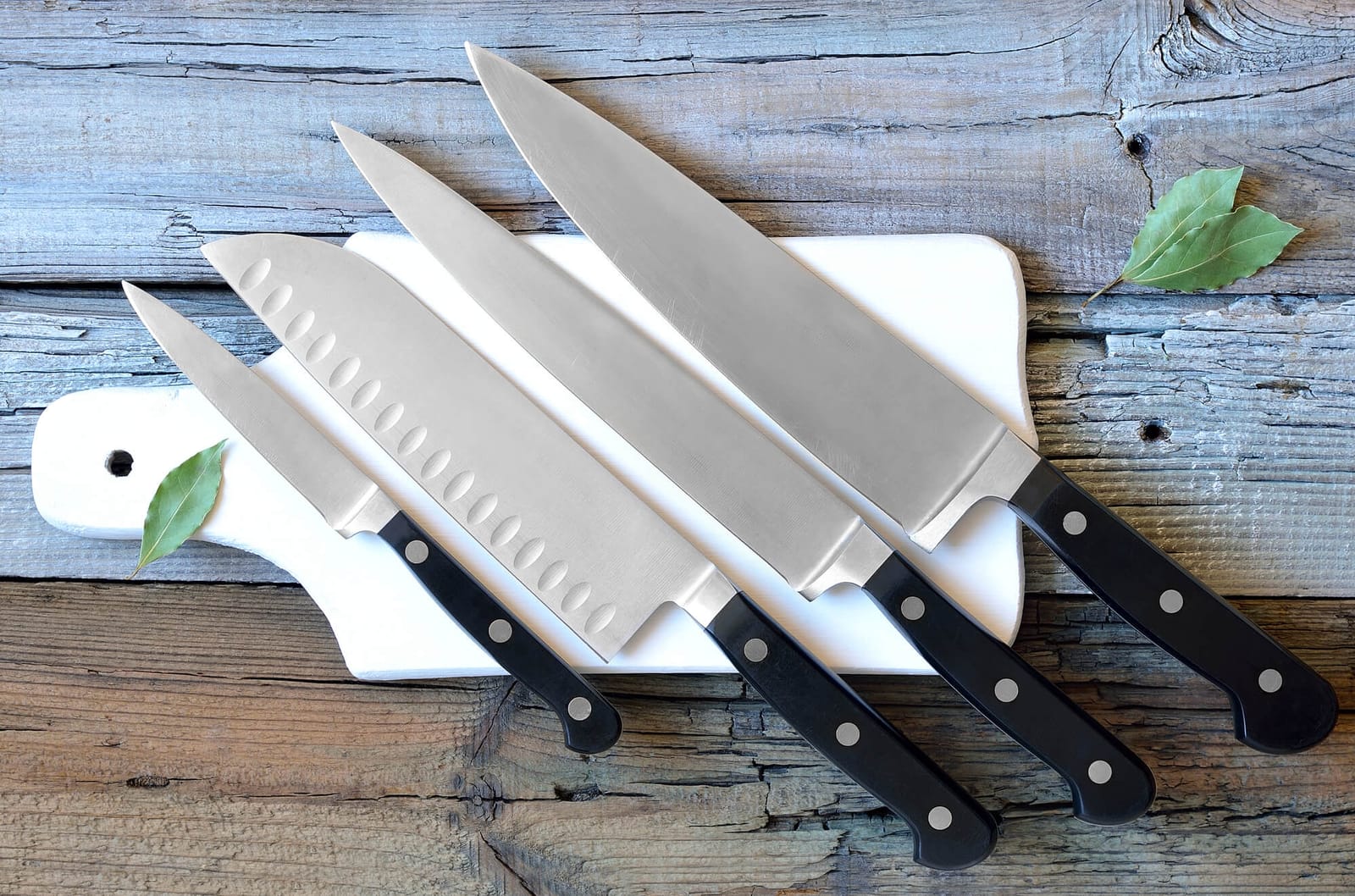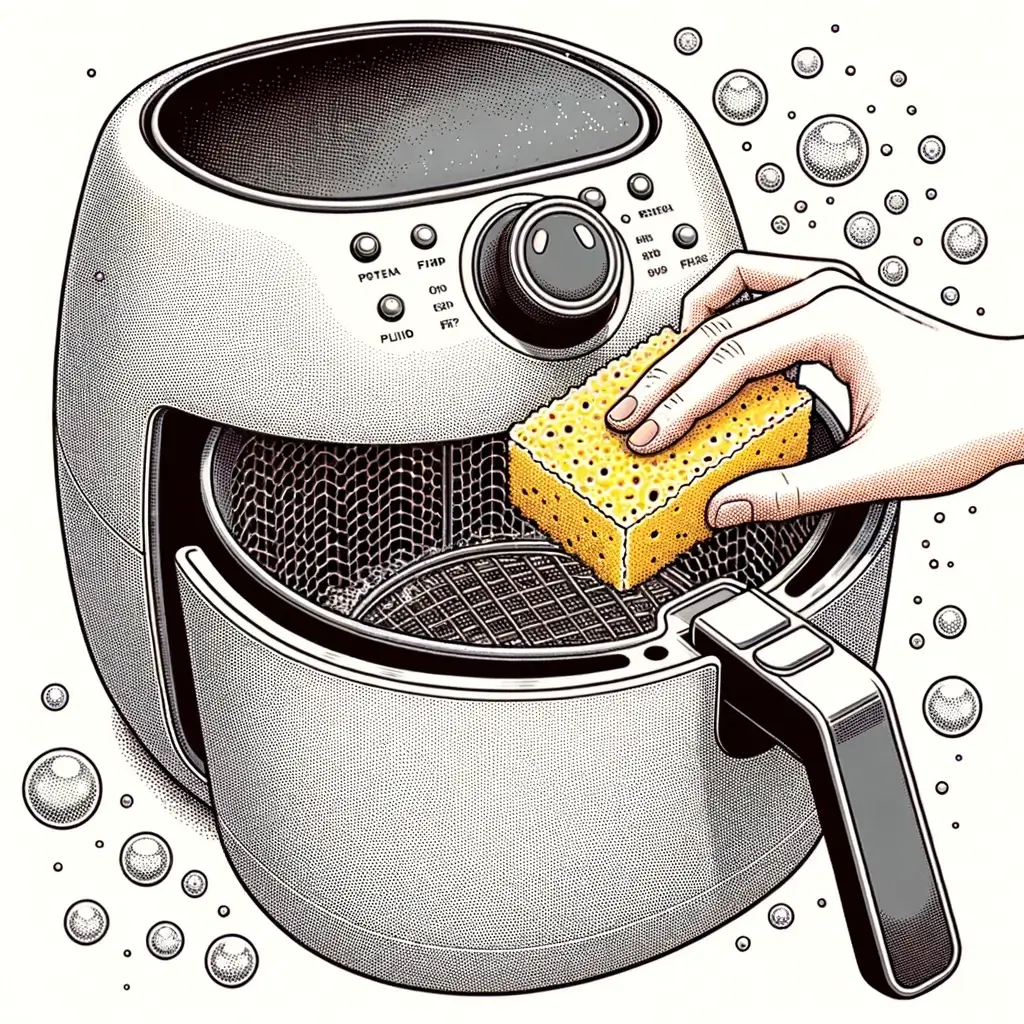Sharp knives aren't just simple kitchen tools. They hold a key role in the world of cooking. This makes preparing food easier and influences how a dish looks and tastes. This article talks about the different ways sharp knives affect cooking. It highlights how important they are for efficient slicing, safety, and great food quality. Knowing the importance of a well-kept knife can upgrade your time spent cooking. It can take it from plain to excellent.
🤝As an Amazon Associate and affiliate with other networks, we earn from qualifying purchases made through our links, at ZERO additional cost to you.
Table of Contents
- How Sharp Should a Knife Be?
- Understanding the Ideal Sharpness for Different Culinary Tasks
- How to Tell if Your Knives are Sharp
- Simple Tests to Assess Knife Sharpness
- How Often Should I Sharpen My Kitchen Knives?
- Guidelines for Maintaining Knife Sharpness
- Specific Types of Knives and Their Sharpness
- Are Ceramic Knives Sharp?
- Are Butter Knives Sharp?
- Are Bread Knives Sharp?
- Are Steak Knives Sharp?
- Safety and Health Aspects of Knife Sharpness
- Why Sharp Knives are Safer
- Do Sharp Knife Cuts Heal Faster?
- Do Sharp Knives Hurt Less?
- Care and Maintenance of Sharp Knives
- Can Sharp Knives Go in the Dishwasher?
- Why Not Put Sharp Knives in Dishwasher?
- People Also Ask
- Is It Better to Have a Sharp or Dull Knife?
- What Are the Benefits of Using a Knife Sharpener?
- How Do Knives Affect the Taste of Food?
- Are Sharp Knives Safer?
How Sharp Should a Knife Be?
Simply put, sharp. The sharpness of a knife is not just a feature; it's the cornerstone of its functionality in the kitchen. A sharp knife ensures efficiency, safety, and precision in a wide range of culinary tasks. In this section, we discuss the optimal sharpness for different types of knives and how this crucial aspect influences their performance in various cooking scenarios.
Chef Knives
Usage: Chef's knives are exceptionally versatile, excelling in a variety of cutting techniques. They are ideal for dicing vegetables into uniform cubes, mincing herbs finely to release their flavors, and julienning ingredients into long, thin strips. Their balanced weight and sharp edge make them perfect for these precision tasks.
Maintenance Tips: To keep a chef's knife in top condition, regular honing is recommended. Honing realigns the edge of the blade and should be done frequently, depending on usage. For sharpening, using a whetstone or a professional sharpening service is advisable once or twice a year to maintain the blade's sharpness.
Material Considerations: Chef's knives come in various materials, with stainless steel and ceramic being the most common. Stainless steel blades are known for their durability and ease of sharpening, while ceramic blades offer exceptional sharpness and lightweight handling but can be more brittle.
Boning Knives
Technique Explanation: Boning knives, with their sharp and flexible blades, are designed for deboning different types of meat. Their agility allows for precise separation of meat from bone, making them ideal for tasks like removing chicken breasts from the ribcage or deboning a leg of lamb.
Handle and Blade Design: The design of a boning knife is crucial for its effectiveness. A comfortable handle ensures a secure grip, while the blade's flexibility allows it to move easily around bones and joints, reducing the effort required and improving precision.
Fillet Knives
Fillet Process: Fillet knives are specialized for preparing fish. Their sharp, thin blades are perfect for gliding between the skin and top layer of meat, offering precision cutting with minimal waste. This process requires a blade that can make smooth, clean cuts without tearing the delicate flesh.
Versatility: Beyond fish, fillet knives are also useful for other delicate tasks, such as preparing poultry or trimming away fat and sinew from various meats, thanks to their precise cutting ability.
Bread Knives
Serrated Edge Explanation: The serrated edge of a bread knife is designed to cut through tough bread crusts effectively while preserving the soft interior. Unlike straight-edged knives, serrated knives saw through the bread, requiring less downward pressure and thus preventing the bread from being squashed.
Other Uses: Bread knives are not limited to slicing bread; they are also excellent for cutting through other foods with a hard exterior and soft interior, like tomatoes or bell peppers, making them a versatile tool in the kitchen.
How to Tell if Your Knives are Sharp
To make sure your knives are sharp enough for preparing food, there are simple tests you can do. In the paper test, you slice paper. In the tomato test, you press the knife on a tomato's skin. If the knife cuts easily, it means it's sharp.
How Often Should I Sharpen My Kitchen Knives?
How often to sharpen a knife depends on what the knife is, what you're cutting on, and how much you use the knife. For example, a chef's knife used every day might need sharpening more often than a paring knife used once in a while. Knowing when a knife needs sharpening, like if it's hard to cut soft food, is important for the knife to work well.
Specific Types of Knives and Their Sharpness
Are Ceramic Knives Sharp?
You'll find ceramic knives are celebrated for their top-notch sharpness. Better than most steel knives even! They're made from a stuff called zirconium dioxide. After a long period in the fire, they come out having super sharp edges that stay sharp for a long time. Cool fact, unlike steel knives, ceramic ones don't rust or get old. This helps them stay sharp for longer. In your kitchen, these knives are perfect for cutting fruits, veggies, and boneless meats. With their sharpness, they're great for tasks that need precision. However, don't use them for heavy stuff like cutting bones or frozen food. They're brittle and can break.
Are Butter Knives Sharp?
Butter knives are designed with a specific purpose in mind: to spread butter and other soft spreads. Consequently, their sharpness is significantly less than that of cutting knives. Typically, butter knives feature a dull edge with a rounded point, making them safe and effective for their intended use. This design ensures that they can spread butter or soft cheeses without tearing bread or damaging delicate surfaces. Their lack of sharpness is a deliberate design choice, aligning with their role in table settings rather than food preparation.
Are Bread Knives Sharp?
Bread knives are distinctively designed with serrated edges, which play a crucial role in their functionality. These serrations allow the knife to grip and cut through the crust of bread without crushing the soft interior. The sharpness of a bread knife is optimized for a sawing motion, enabling it to slice cleanly through various types of bread, from crusty baguettes to soft loaves. The serrated edge is not only sharp but also durable, maintaining its effectiveness over time and reducing the need for frequent sharpening.
Are Steak Knives Sharp?
Sharp steak knives are essential for an enjoyable dining experience, especially when it comes to cutting meat. A well-sharpened steak knife cuts through meat cleanly and efficiently, enhancing the texture and flavor of the steak. These knives typically feature either a serrated or a straight edge, both designed to slice through meat with minimal effort. The sharpness of steak knives is crucial as it allows diners to cut meat easily without shredding or tearing, preserving the integrity of the meat's fibers and ensuring a pleasant eating experience.
Safety and Health Aspects of Knife Sharpness
Why Sharp Knives are Safer
Sharp knives are considered safer in the kitchen due to their efficiency and precision. A sharp knife requires less force to cut, reducing the risk of the knife slipping and causing an injury. It allows for greater control and accuracy, making precise cuts more achievable and reducing the likelihood of accidental slips. In contrast, a dull knife can require excessive force, increasing the risk of losing control and potentially causing injury.
Do Sharp Knife Cuts Heal Faster?
From a medical perspective, cuts made by sharp knives tend to heal faster and cleaner compared to those made by dull knives. Sharp knives create a clean cut, minimizing tissue damage and reducing the risk of jagged wounds. This leads to a more straightforward healing process, as the edges of the cut are more likely to align properly, facilitating quicker and more efficient healing. In contrast, dull knives can cause more tissue damage, leading to longer healing times and a higher risk of infection.
Do Sharp Knives Hurt Less?
While no kitchen injury is desirable, the nature of a cut from a sharp knife is generally cleaner compared to a jagged tear from a dull one. Medical professionals note that cleaner cuts can be less painful and may heal more quickly and neatly, reducing the risk of infection. This section will explore medical insights on the nature of injuries caused by sharp versus dull knives, emphasizing the importance of using well-maintained knives for safety.
Care and Maintenance of Sharp Knives
Can Sharp Knives Go in the Dishwasher?
The debate on whether sharp knives can be safely washed in a dishwasher involves considering the impact on blade longevity and sharpness. Dishwashers can cause knives to bump against other items, dulling their edges. Hand washing is recommended to preserve the knife's edge. This part provides alternative cleaning methods that protect the sharpness of your knives, ensuring they remain in top condition for longer.
Why Not Put Sharp Knives in Dishwasher?
Placing sharp knives in the dishwasher is discouraged as it can compromise their sharpness and longevity. The harsh environment inside a dishwasher, including high temperatures, potent detergents, and jostling from other dishes, can dull the blade and damage the handle. Hand washing sharp knives not only preserves their edge but also extends their lifespan. It's recommended to clean them gently with soap and water and dry them immediately to maintain their sharpness and prevent corrosion.
While it's generally recommended to hand wash your knives, if you're looking for knives that can withstand the dishwasher, check out our guide on the best dishwasher-safe knives.
People Also Ask:
Is it better to have a sharp or dull knife?
A sharp knife is always preferable for its efficiency and safety.
What are the benefits of using a knife sharpener?
Using a knife sharpener regularly ensures that knives maintain their optimal performance, enhancing both safety and the quality of food.
How do knives affect the taste of food?
Sharp knives ensure clean cuts, which help in preserving the flavor and texture of ingredients, thereby positively affecting the taste of food.
Can a dull knife affect the quality of my meals?
Indeed, the use of dull knives can adversely affect both the preparation process and the final presentation of your meals.
Are sharp knives safer?
Sharp knives are safer as they require less force and provide better control, significantly reducing the risk of accidental cuts in the kitchen.
Further Reading
- For an insightful visual guide on sharpening and cleaning knives, check out Epicurious's video 'The Best Way To Sharpen & Clean Knives (And The Worst)' for expert tips and techniques.



